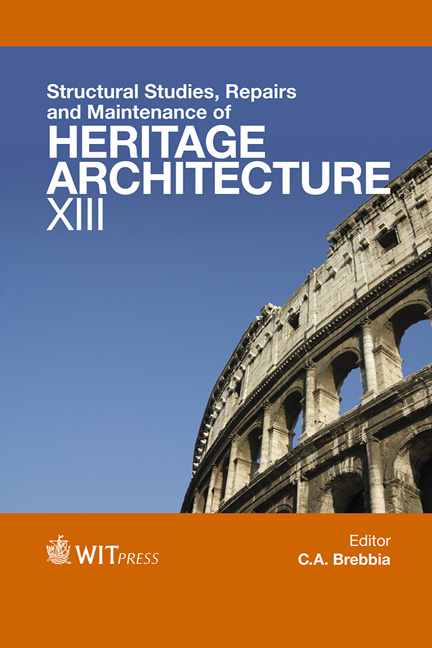Influence Of The Maintenance In Seismic Response Of Lorca Historic Centre Masonry Residential Buildings After The 11 May 2011 Earthquake
Price
Free (open access)
Transaction
Volume
131
Pages
12
Page Range
343 - 354
Published
2013
Size
1,936 kb
Paper DOI
10.2495/STR130291
Copyright
WIT Press
Author(s)
L. Basset-Salom & A. Guardiola-Víllora
Abstract
Lorca, the city centre of which had been one of the first in Spain to be declared an artistic historic site (1964), is an earthquake prone city. This is the reason why its unreinforced masonry vernacular residential architecture includes reinforcement features (quoins, pegs or ring beams) reducing the seismic vulnerability and improving, consequently, their seismic behaviour. Nevertheless, the seismic response of those buildings to the Lorca May 11th 2011 earthquake was very heterogeneous; it is important to point out that even some of them were demolished in the aftermath of this event. Given that the seismicity and construction and geometric characteristics (load-bearing walls, floors, materials, height, façade layout, etc.) are similar in the historic centre, a comparative study of the vulnerability of a sample of buildings with diverse observed damage degrees has been carried out in order to understand why their seismic response has been different. Results showed that notwithstanding the influence of construction techniques, the level of building maintenance (masonry and roofs) is a determinant factor in lowering the vulnerability of unreinforced masonry structures in historic city centres and in improving their seismic behaviour. Keywords: Lorca earthquake, maintenance of the Spanish historic centres, masonry residential buildings, seismic response, observed damage.
Keywords
Keywords: Lorca earthquake, maintenance of the Spanish historic centres, masonry residential buildings, seismic response, observed damage.




